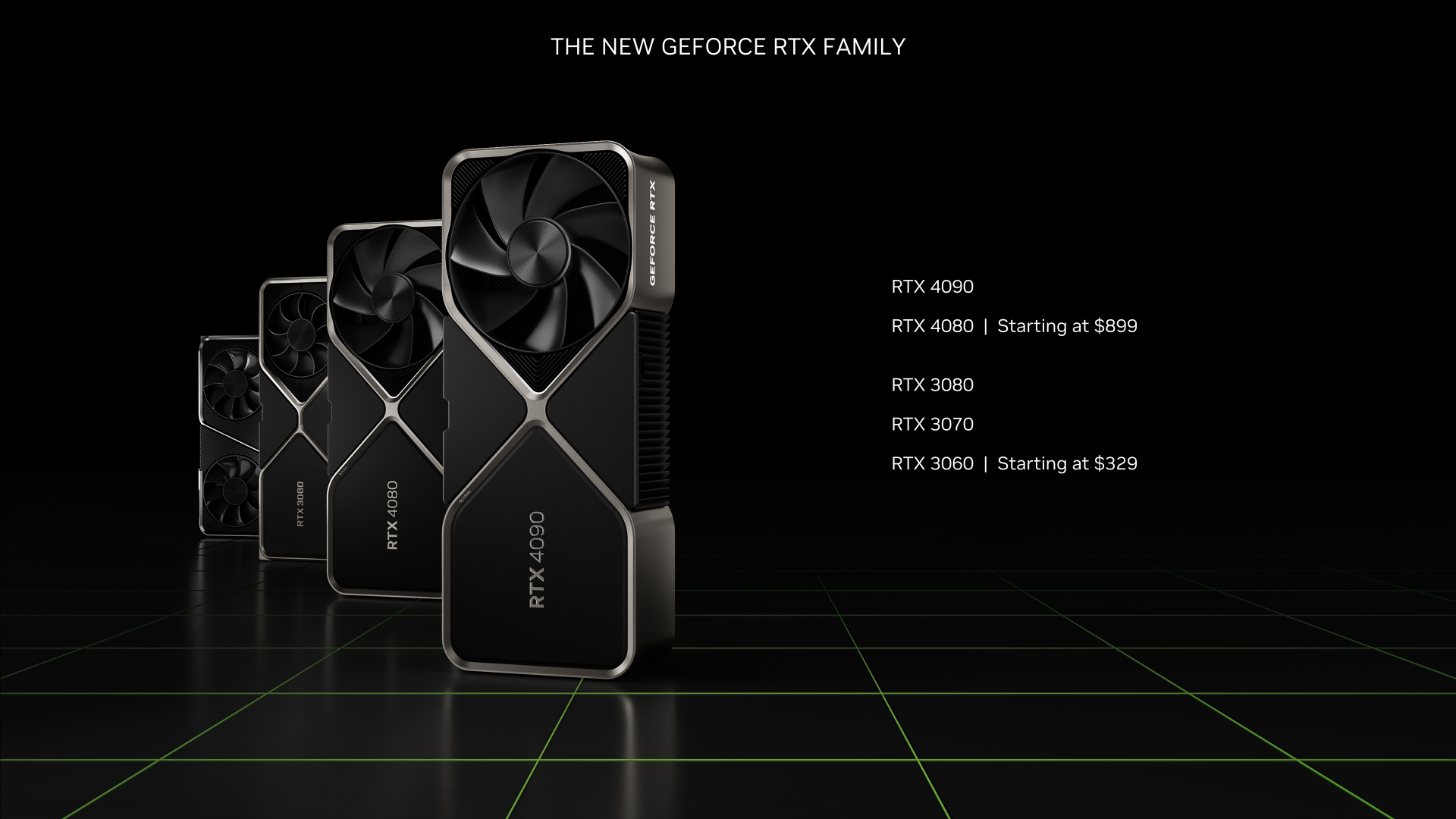
Today at nVidia’s GeForce Beyond event, the next-generation of graphics cards have been revealed. Running under the Ada Lovelace architecture and as the 3rd-generation RTX architecture, bringing a leap above Ampere. Ada Lovelace improves upon Ampere with twice the performance, efficiency, AI and ray tracing capabilities.

The next version of nVidia’s DLSS as 3.0 is exclusive to 4000 series as the company explained that previous generations would result in poor performance under DLSS 3.0.
In other improvements is the neural engine that powers nVidia Broadcast and Voice, background removal is enhanced with temporal processing by removing more of the background accurately; enabling virtual avatars to accurately be reflected by the streamer’s facial expression; as well as bringing a near uncanny feature of streamer’s eyes to remain in contact with the camera.
Speaking of content creators, Ada Lovelace improves upon the AV1 encoder, which is an open video encoding format that allows streaming software to take advantage to deliver better image quality at a lower bandwidth cost; in addition, the improved video encoder allows video editors to quickly export at twice the speed from Ampere due to a dual encoder feature.

Now let’s go in-depth with the three graphics cards that were announced, the 4090 and two 4080 with small differences.
nVidia GeForce RTX 4090

- 24 GB GDDR6X with a 384-bit Memory Interface
- 16384 CUDA Cores
- Boost Clock of 2.52 GHz and Base Clock of 2.23 GHz
- 3rd-Generation Ray Tracing and 4th-Generation Tensor Cores
- nVidia DLSS 3.0
- Length: 304mm, Width: 137mm
- Slot: 3-slot at 61mm
- Graphics Card power of 450w
- Required PSU of 850w with 3x PCIe 8-pin cables (adapter included) or 1x 450 or greater PCIe Gen 5 cable
Available on October 12th and priced $1,599 USD.
nVidia GeForce RTX 4080 (16 GB & 12 GB)

nVidia revealed two versions of the 4080 with the 4070 being a no show, let’s start with the 16 GB’s specifications.
- 16 GB GDDR6X with a 256-bit Memory Interface
- 9728 Cuda Cores
- Boost Clock of 2.51 GHz and Base Clock of 2.21 GHz
- 3rd-Generation Ray Tracing and 4th-Generation Tensor Cores
- nVidia DLSS 3.0
- Length: 304mm, Width: 137mm
- Slot: 3-slot at 61mm
- Graphics Card power of 320w
- Required PSU of 750w with 3x PCIe 8-pin cables (adapter included) or 1x 450w or greater PCIe Gen 5 cable
Available in November and priced $1,199 USD.
Onto the 12 GB variant of the 4080, here’s the specifications.
- 12 GB GDDR6X with 192-bit Memory Interface
- 7680 Cuda Cores
- Boost Clock of 2.61 GHz and Base Clock of 2.31 GHz
- 3rd-Generation Ray Tracing and 4th-Generation Tensor Cores
- nVidia DLSS 3.0
- Dimensions aren’t included and varies by manufacturers
- Graphics Card power of 285w
- Required PSU of 700w with 2x PCIe 8-pin cables (adapter included) or 1x 300w or greater PCIe Gen 5 cable
Available in November and priced $899 USD.
Despite the dissolution of the partnership between EVGA and nVidia, the company didn’t forget the remaining third-party manufacturers. Which their own information of their graphics cards will be revealed soon.

Source: nVidia’s Content Creation; nVidia’s 4000 Series Announcement

Leave a Reply